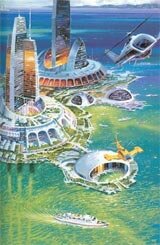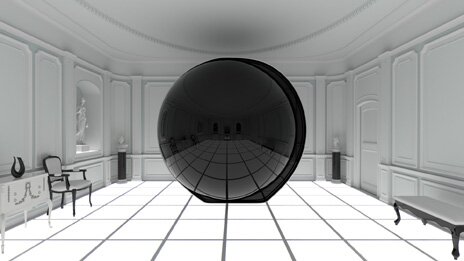
In January I became a partner at NAU, a unique design collective focused on the creation of narrative spaces.
We often fuse physical & digital design, utilizing emergent technology and catering to markets including architecture, interior design, experience design, advertising, film, television and interactive media. NAU’s principals are active innovators, pursuing a future design initiative, yielding such concepts as the Stratocruiser, and speaking at universities and conferences worldwide.
NAU’s partners include former Studio Daniel Libeskind architects Michael Brown and Jean-Lucien Gay, former Zaha Hadid architect Pia Habekost, Hollywood production designer, Tino Schaedler and myself, Oliver Zeller.
I invite you to subscribe to the NAU newsletter and visit our new website at nau.coop. We have over twenty projects on display and also offer a sneak peek at our directorial & design work on several upcoming spec commercials and short films.
Continue reading ‘NAU’
OZ | October 25th, 2009 | Conservation and Street Art |  | Bookmark
| Bookmark
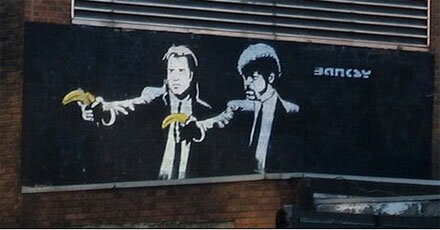
Once perceived as the scorn of urban areas, graffiti at its best has resulted in murals that transform dull architecture and even derelict neighborhoods and decrepit walls into vibrant & appealing spaces.
Graffiti is a tradition that reaches into the annals of history. Ancient Rome was rife with it, offering social commentary, satire and a reflection of the times. One graffito near Palatine Hill in Rome, the Alexamenos graffito, is believed to be the earliest known pictorial representation of the crucifixion of Jesus. Of such significance to Rome’s history, its graffiti was brilliantly brought to life by A52 in the title sequence for HBO’s series Rome.
Where as modern graffiti can truly serve aesthetic needs, its ancient counterpart appeared to lack the same lofty aesthetics. Perhaps it wasn’t as necessary in prominent cities abundant with ornate architecture and cobbled streets. Our modern urban areas maybe cleaner & more practical, but these concrete and asphalt jungles too frequently suffer from banality.
Granted graffiti has long been accused of producing “an atmosphere of social decay and neglect”, its artists subjected as criminals. A preponderance on uninspired writing in modern graffiti, amateurish chaotic scrawls, gang communications and misguided placement, lends credence to this argument. Subjective material in today’s uptight politically correct climate adds to the issue. It is understandable why local authorities would paint over or clean away such work.
However when the work is of such supreme excellence, when it clearly revitalizes an area, and its destruction produces a deterioration of the space, it is the local authorities that have committed a crime. Produced an urban tragedy.
Continue reading ‘An Urban Tragedy’
OZ | September 17th, 2009 | Special Feature and TV |  | Bookmark
| Bookmark
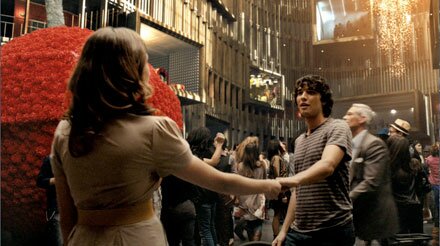
On July 7th, The SciFi channel rebranded itself to Syfy. The new name was perhaps the most widely derided since Nintendo’s market leading Wii. Nonetheless, it appears to be paying dividends with increased viewership. Syfy’s previous identity remained intact with expanded brand potential, in an era where the traditional television model continues to erode.
Rather than being branded as a destiantion for only sci-fi, they really wanted “to own the imagination space.” This led Syfy to commision an ident short film, House of Imagination, as part of their Imagine Greater campaign.
BAFTA & Cannes Lion award winning 4Creative spearheaded the endeavour, directed by Brett Foraker. Accompanying him, the cinematographer of Watchmen, Lost and 300, Larry Fong; and production designer Tino Schaedler, whose credits include Harry Potter and the Order of the Phoenix, and The Golden Compass. Visual effects were provided by the Moving Picture Company.
Following is a behind the scenes glimpse of the design, courtesy Tino Schaedler. Each set focuses on a space, featuring concept art & digital set designs accompanied by construction photos and the finished shot.
Continue reading ‘Behind the House of Imagination’
OZ | July 16th, 2009 | Architecture and Future |  | Bookmark
| Bookmark
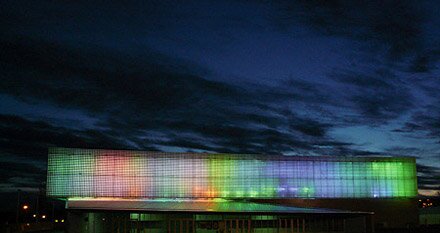
Over the decades individuals have become more outward in their expression, most recently exemplified by the rise of social networks. Through their Design Probes initiative, electronics giant Philips has invested considerable resources researching technologies that afford users new modes of expression from dynamic tattoos to dresses, receptive and reflective of the wearer’s mood.
What if this notion is extended to an architectural context? Not just a visual branding exercise or minor interactive quality between pedestrian and facade as produced today, but something more substantial.
Continue reading ‘Emotive Architecture’
OZ | July 16th, 2009 | Photography |  | Bookmark
| Bookmark
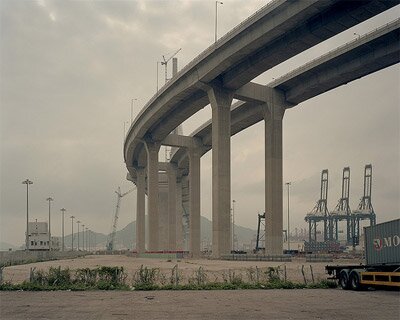
Beth Kaltman and Jason Koxvold have occupations that frequently take them on the road. Beth, represented by such luminary modeling agencies as Ford Models. Jason, creative director at ad agency StrawberryFrog’s New York office.
This road work has facilitated their individual passion for high caliber photography.
Continue reading ‘Road Work’
OZ | May 29th, 2009 | Books |  | Bookmark
| Bookmark
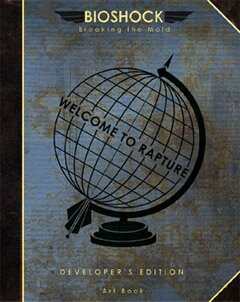 Bioshock Breaking the Mold: Developer’s Edition Art Book
Bioshock Breaking the Mold: Developer’s Edition Art Book
“This 174 page, 8″x10″ limited run soft cover artbook, available only on the Take-Two Store, features never-before seen art from BioShock 1, stories about the game?s journey through its years of development, commentary from the team, an introduction by 2K Marin?s Executive Producer Alyssa Finley, several new sections, and much more.”
Editor’s Note: The art of Bioshock is among the finest in gaming history. That fans voted three other items over an art book for the Collector’s Edition was a travesty. Now rectified thanks to Bioshock Community Manager Elizabeth Tobey. Art reproduction is of a high quality, accompanied by numerous snippets of development insight from various team members. A thick perfect bound volume, it lacks the high end hardcover quality of the genre’s upper echelon art books. However this doesn’t detract, thanks to its styling, it almost come across like a relic from Rapture itself. If the $25 price tag is undesirable, the original and shorter PDF art book is available for download.
Paperback | 174 pages | Take 2 | May 2009
Continue reading ‘Book Watch | Bioshock to Nature’s Patterns’
OZ | May 4th, 2009 | Architecture and TV |  | Bookmark
| Bookmark
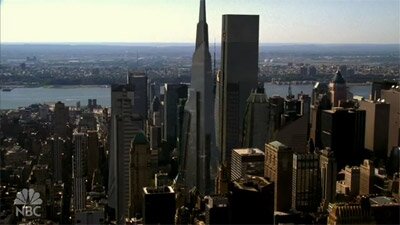
NBC’s Kings has proven the most fascinating new television series of the mid-season. A reinterpretation of the classic King David tale translated into modern times, monarchy intact.
New York City serves as the basis for the new capital of this modern kingdom, Shiloh, retrofitted with visual effects and apt production design as done so effectively in director Francis E. Lawrence’s previous work, I Am Legend.
A long, straight road leads to Shiloh’s centerpiece landmark, evoking at least in effect, the East-West axis of Hitler and Speer’s Welthauptstadt Germania. Except here there is no Arch of Triumph or Volkshalle, rather a prominent skyscraper, its black angled facades reminiscent of a stealth fighter shrouding the monarchy’s political machinations. Its position in the skyline unimpeded by competing distinctive skyscrapers; the Chrysler and Empire State Building are nowhere to be seen.
Continue reading ‘A New Kindgom’
OZ | May 4th, 2009 | Architecture, Books and Film |  | Bookmark
| Bookmark
During the nineteenth century, European and American artists flocked to Eastern cultures, from Morocco to India. Their works fueled the exotic and mythical perception of the Orient with cinematic depictions of islamic culture that continue to influence the arts today. These artists are commonly referred to as the Orientalists.
Last year while exploring and working in Marrakech I came across numerous books on or related to the topic. Following are some noteworthy selections.
If you’re ever in Marrakech, be sure to visit the oldest book store in Marrakech, open since 1948, it can be found within the medina’s souks. Publisher ACR also has a well stocked shop buried in Gueliz, the city’s French section.
Continue reading ‘Book Watch | Orientalists’
OZ | March 24th, 2009 | Architecture and Games |  | Bookmark
| Bookmark
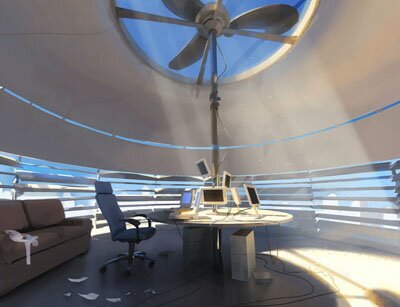
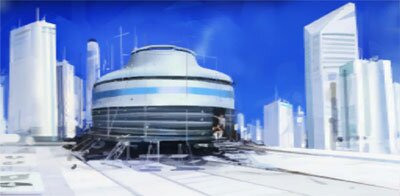
Since the turn of the century, repurposed spaces have proliferated, spurred by 21st century cultural influences and the green initiative. It’s redefining the urban fabric, evident here in Lower Manhattan where the world’s commercial mecca has become increasingly residential since 2001. More creative endeavours have led to efforts including the iconic
Freitag store in Zurich and a
Redondo Beach house, both utilizing the ever popular recycled shipping container.
Recently, the most creative repurposed structures have existed in the digital realm of games, from Mirror’s Edge to Fallout 3.
Continue reading ‘Gaming’s Repurposed Spaces’
OZ | March 24th, 2009 | Books |  | Bookmark
| Bookmark
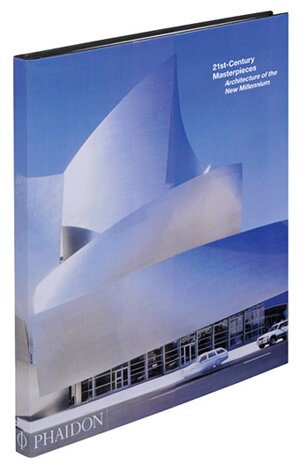 21st-Century Masterpieces - Architecture of the New Millennium
21st-Century Masterpieces - Architecture of the New Millennium
“A concise overview of the most extraordinary landmarks built around the world since the turn of the millennium including stadia, theatres, museums, offices, government buildings, chapels and retail spaces.
Features such noteworthy projects as the Casa da Música in Portugal by OMA, the Walt Disney Concert Hall in the United States by Frank Gehry, Federation Square in Australia by Bates Smart, and the National Stadium in China by Herzog & de Meuron.
Includes a descriptive text for each project, accompanied by an extensive selection of exterior and interior photographs, plans and architectural drawings.”
Editor’s Note: This inexpensive hardcover volume will hit shelves along with 21st Century Houses. Both appear derived from the hefty Phaidon Atlas of 21st Century World Architecture.
Hardcover | 160 pages | Phaidon | May 2009
Continue reading ‘Book Watch | From Burma to Chicago’



















